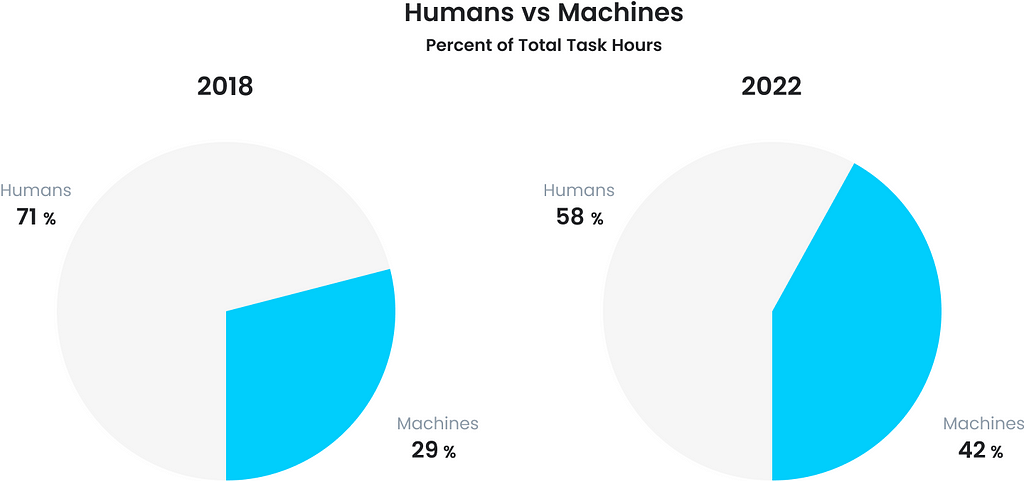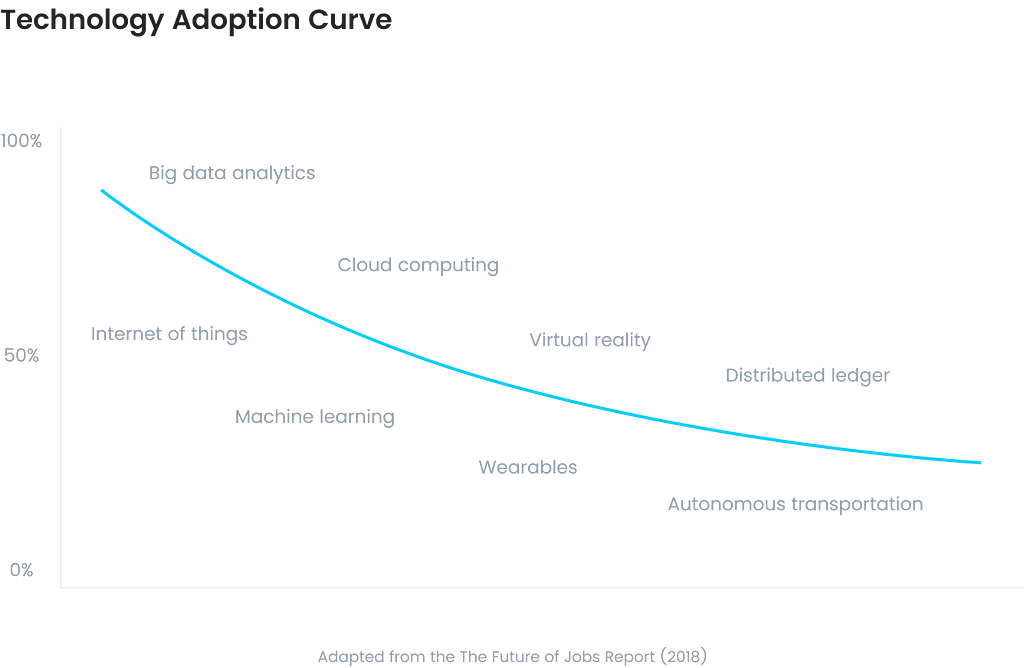Latest news about Bitcoin and all cryptocurrencies. Your daily crypto news habit.
 Photo by Dominik Scythe
Photo by Dominik Scythe[ TL;DR ]
- By 2022, WEF estimates technology will create 133 million jobs and eliminate 75 million, for a net gain of 58 million
- Pollyannaism can leave us unprepared for long-term, structural changes to the workforce
- The relentless progress of automation can destroy the jobs it creates next
- Reskilling large numbers of workers in time may be impractical or impossible
The World Economic Forum released its annual Future of Jobs Report, outlining important trends poised to disrupt the global economy over the next five years. The biggest takeaway: by 2022, new technologies and automation will create 133 million jobs and eliminate 75 million, for a net gain of 58 million.
What’s driving growth? Ubiquitous high-speed mobile internet, artificial intelligence, widespread adoption of big data analytics, and cloud technology.
Automation is rapidly expanding and machines are working harder. By calculating task hours, we can compare the total time humans and machines spend on their respective tasks:
“In 2018, an average of 71% of total task hours across the 12 industries covered in the report are performed by humans, compared to 29% by machines. By 2022 this average is expected to have shifted to 58% task hours performed by humans and 42% by machines.”
The World Economic Forum has called this era of technological change the Fourth Industrial Revolution. The Fourth Industrial Revolution, according to the WEF, will be one of massive job automation but even greater job augmentation. With some worker retraining, the future should be bright.
But here’s what the rosy WEF report missed.
1. The automation steamroller
Businesses surveyed by the WEF report varying rates of technology adoption:
Adoption, the vertical axis in the chart above, is only half of the innovation equation. New technology development, the horizontal axis, accelerates in parallel.
As a result, the pace of automation is faster than the rate of technology adoption. The more we automate, the faster we will be able to automate the jobs of the future.
Uber, for instance, has automated ride sharing, which has given rise to over two million jobs. But as Uber and Google pursue autonomous vehicle technology, these newly created jobs are the very next jobs on the chopping block.
Uber drivers face an odd existential crisis — they know their employer’s future strategy is to put them out of a job.
And let’s take a look at other newly created jobs today, like data scientists. Will their repeated task, such as data wrangling and data visualization all be automated by services of the future? Digitally enabled new jobs are particularly at risk, because they are already enabled by software and create a data footprint that can be run through machine learning for optimization or automation.
Even if software and machine learning simply augment the productivity of workers (as opposed to eliminating the jobs entirely), the unavoidable fact is that it it will take fewer and fewer people to manage the total work — a total reduction in the number of employees required over time for any specific function.
Are the 133 million jobs created just the next ones to disappear?
2. The reskilling bottleneck
With the rate of technology adoption, it’s unsurprising that the outlook for software developers remains strong. We’ve known that developers are increasingly important for decades now. And non-profit organizations, like Quincy Larson’s freeCodeCamp, will even teach you to code for free.
So why are developers such a scarce resource? According to a recent Stripe report, companies view developers as a bigger constraint than capital when it comes to innovation.
While technology may create a large number of new jobs, those jobs may be difficult for large populations of the workforce to learn and perform.
Even worse, reskilling bottlenecks and automation exist in a feedback loop. The greater the bottleneck, the greater the incentive to automate those jobs or to diminish the number of jobs created by augmenting worker productivity.
3. The Luddite fallacy and Pollyannaism
The WEF report is largely optimistic about the future of jobs. Marc Andreessen concurs, saying, “It’s a fallacy….It’s a recurring panic. This happens every 25 or 50 years, people get all amped up about ‘machines are going to take all the jobs’ and it never happens.”
But a pollyannaish view, if incorrect, can dramatically reduce the amount of time needed to respond to a mass loss of jobs.
There may be reasons why this cycle won’t play out like the industrial revolution. Software is already the backbone of nearly every medium to large company, allowing automation unprecedented reach.
In addition, as services, devices, and platforms proliferate, workers across nearly all industries and positions can become increasingly productive, reducing the total number of jobs available.
As a result, job loss can be far more rapid than jobs created and worker reskilling.
We can all hope that the WEF and Marc Andreessen have it right. But if they don’t, we need to start planning for the creation of real, sustainable jobs in the face of constant technology advancement and automation.
Thanks for reading. If you’re a developer, see what you can learn from your coding data at software.com.
Software | Track code time in your text editor or IDE
What the World Economic Forum Got Wrong about the Future of Jobs was originally published in Hacker Noon on Medium, where people are continuing the conversation by highlighting and responding to this story.
Disclaimer
The views and opinions expressed in this article are solely those of the authors and do not reflect the views of Bitcoin Insider. Every investment and trading move involves risk - this is especially true for cryptocurrencies given their volatility. We strongly advise our readers to conduct their own research when making a decision.


